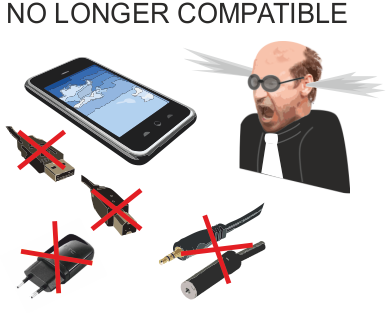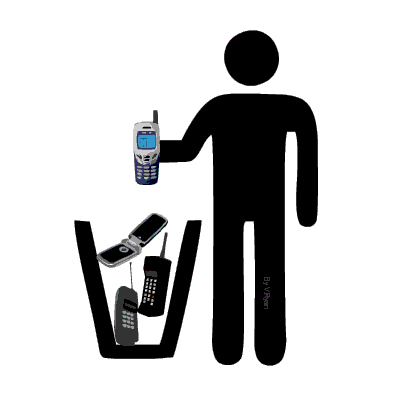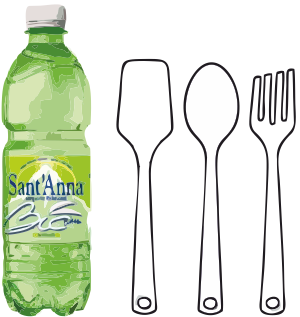| CLICK HERE FOR INDEX PAGE | |
| WHAT IS PLANNED OBSOLESCENCE? | |
| V. Ryan © 2013-2019 | |
| PDF FILE - CLICK HERE FOR PRINTABLE WORKSHEET | |
| PDF FILE - OBSOLESCENCE - PLANNED AND PERCEIVED - Boxed Learning Exercise | |
|
Planned obsolescence is when a product is deliberately designed to have a
specific life span. This is usually a shortened life span. The product is
designed to last long enough to develop a customer’s lasting need. The
product is also designed to convince the customer that the product is a
quality product, even though it eventually needs replacing. In this way,
when the product fails, the customer will want to buy another, up to date
version. Take for example a washing machine. Planned obsolescence means that the washing machine (seen opposite) is designed to last about two years, before it breaks down outside the guarantee time. Most of the components / parts have been manufactured from quality materials with the exception of some vital parts. Two years after purchase, the washing machine will only need minor inexpensive repairs. However, between 4 to 5 years the vitals parts begin to wear out and a replacement machine is required. For planned obsolescence to work, the customer must feel that he/she has had value for money. Furthermore, he/she must have enough confidence in the manufacturer/company, to replace the original washing machine with the modern equivalent machine, from the same manufacturer. |
 |
| Planned obsolescence is sometimes designed into a product, in order to encourage the customer to buy the next upgrade. A good example of this is a mobile phone. Mobile phones are often designed with only current technology in mind, despite the manufacturers knowledge of future technological developments. For instance, a mobile phone may have USB / connections / jack plugs, that fit current products, such as head phones and computers. This means that the phone is not future proof. The manufacturer may already be working on updated phones, that connect using different sizes of USB ports / connections. Although the current phone can be upgraded with software, eventually the ‘old’ USB / connections / jack plugs will make the product obsolete. The customer will need a new phone, even though there may be nothing wrong with his / her existing phone. The old phone becomes obsolete. |
 |
|
Designers following the philosophy of ‘Built In Obsolescence’, ask
themselves, ‘how can a product be designed so that it breaks down quite
quickly, but it still leaves customer confidence in the product and
manufacturer intact’. Planned obsolescence can be regarded as bad for the environment, because it leads to products being ‘dumped’ by customers, so that new updated products can be acquired. The quandary that good designers face, is to design desirable products, with components / parts that can be recycle or reused, when the product is thrown away, by fashion/style conscious consumers. |
 |
 |
Planned obsolescence is sometimes deliberately and openly built into
products for safety reasons. Sell by dates and use by dates on foods, are
a guide to both the retailer and customer, highlighting when a food
product is safe to eat and at its best. Further examples are disposable cutlery and soft drinks bottles, which are manufactured cheaply and designed to be used once / twice. These products are sometimes manufactured from biodegradable polylactide (PLA), which can be thrown away and yet is safe for the environment. |
| CLICK HERE FOR PRODUCT DESIGN INDEX PAGE | |